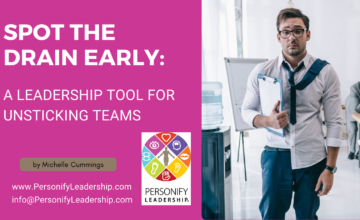The Cost of Stress-Driven Absenteeism & The ROI of Emotional Agility
- Apr 11, 2025
- By personifyadmin
- In Newsletters
- 0 Comments
The Mind of a Leader and the ROI of Emotional Agility
by Paul Cummings
Stress is an invisible tax on performance. It drains energy, clouds decision-making, and drives people to stay home. When stress builds, absenteeism rises. That loss in time and productivity hits the bottom line in any business. But when leaders learn to manage pressure with agility, they create a work environment that is steady, responsive, and focused. The outcome is a real and measurable drop in absenteeism.
Stress is part of work. The problem is not the pressure itself, but how people respond. Leaders who stay composed under pressure, shift quickly between emotions, and guide their teams through uncertainty create cultures that can adapt. This ability to adjust and recover is what agility looks like. It keeps people grounded. It keeps people present. And it saves money.
The Cost of Stress-Driven Absenteeism
Most employees take around six unscheduled days off per year due to stress. Each absence costs about $300 per person per day when factoring in lost productivity and disruption. On a team of 100 employees, that adds up to $180,000 a year. Much of this comes from stress that spreads through poor leadership habits like unclear direction, constant urgency, or unmanaged tension.
Now consider the shift when leaders know how to manage stress. They stay composed. They take time to reset before reacting. They check in with their teams. When leaders do this consistently, their teams follow. People feel more supported and less overwhelmed. The stress is still there, but it no longer controls the room.
Reducing absenteeism from six to four days per employee gives back 200 days of work. At $300 per day, that’s a $60,000 gain! All from more agile behavior at the top.
Agility in Daily Practice
Agile leaders manage stress in real time. They notice rising tension in themselves and in others. They adjust expectations when pressure is high. They listen before they speak. This creates space for teams to stay steady and engaged.
This also changes how people feel about coming to work. A calm environment invites people to stay present, a reactive one pushes them away. Teams led with agility take fewer unplanned days off, solve problems faster, and support each other more.
One manager shared with us that her team had regular Monday absences. After adding a five-minute morning check-in to talk about pressure points, the pattern changed. Absences dropped. People said they felt more seen and less isolated. That is the power of a small, consistent shift.
Why It Pays Off
People take time off when they feel stuck or unsupported. Agile leadership helps them feel capable and valued. It brings clarity, pace, and steadiness. That lowers the stress load and makes the workplace a safer place to perform.
This is not about adding another program or policy. It is about leaders showing up with the right mindset. That mindset creates cultures that adapt instead of react.
The Value Is Clear
You cannot remove stress from work, but you can change how people handle it. When leaders build emotional agility, absenteeism goes down. Performance goes up. The numbers prove it. The culture reflects it. And the organization benefits in every way that matters.
Agility is not just about being fast; it’s about being ready. It’s about recovering with purpose. And it is a skill that pays for itself.
If this resonates, the Mind of a Leader module in our Core Program is where the shift begins. It helps leaders build the emotional agility described here—staying composed under pressure, choosing their mindset, and creating calm in the chaos. When leaders start with awareness and lead with intention, they don’t just manage stress—they model resilience. That mindset becomes the culture. And the results speak for themselves.






Recent Comments